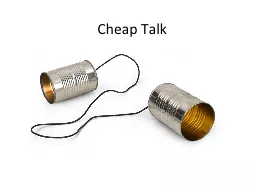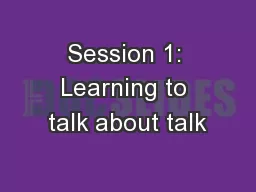PPT-Cheap Talk
Author : tawny-fly | Published Date : 2017-03-20
When can cheap talk be believed We have discussed costly signaling models like educational signaling In these models a signal of ones type is credible if the cost
Presentation Embed Code
Download Presentation
Download Presentation The PPT/PDF document "Cheap Talk" is the property of its rightful owner. Permission is granted to download and print the materials on this website for personal, non-commercial use only, and to display it on your personal computer provided you do not modify the materials and that you retain all copyright notices contained in the materials. By downloading content from our website, you accept the terms of this agreement.
Cheap Talk: Transcript
Download Rules Of Document
"Cheap Talk"The content belongs to its owner. You may download and print it for personal use, without modification, and keep all copyright notices. By downloading, you agree to these terms.
Related Documents














